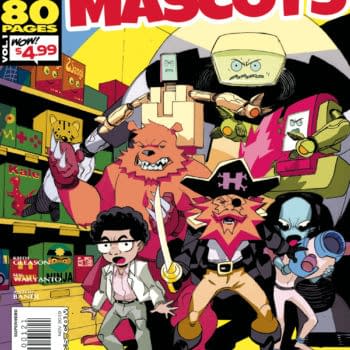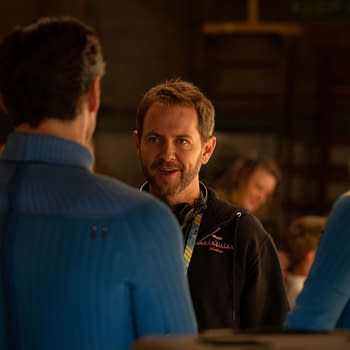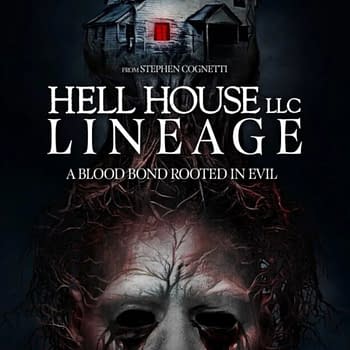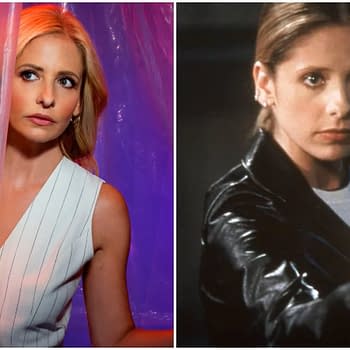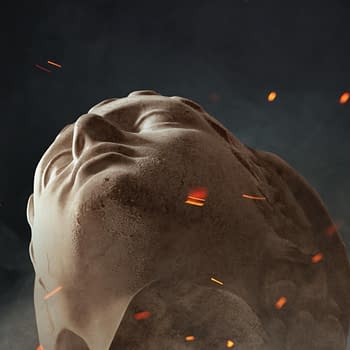Posted in: Movies | Tagged:
Semi-Coherent by Tom Huxley #2 – Arm-Wrestling To Horrify
Tom Huxley writes for Bleeding Cool.
The Cabin in the Woods is one of those films where the less you know about it beforehand, the more you will get out of your first viewing. (I'm not actually inclined to believe there is any other kind of film, or any other kind of story-oriented experience – but it's particularly true in this case.) So if you haven't already seen it – stop reading at this point, and go and see it!
I'll be sidestepping the big reveals as much as possible, unlike certain other reviews floating around out there (I'm looking at you, Village Voice, with your ruin-the-entire-ending opening sentence), but this piece really is meant as a talking point for people who've actually seen it.
I want to see this film again. Not just so that I can peel back the layers of rich detail (identifying all the activation keys we saw in the cellar, for example) or better understand how the characters relate to their real-life counterparts (is there a degree of self-flagellation on the parts of Goddard and Whedon in the high-minded hypocrisy of the Whitford and Jenkins characters?), or even to analyse the metaphors and motifs with a wiser pair of eyes. But primarily because it is a thoroughly entertaining thrill-ride of an adventure – and while it won't be able to surprise or wrong-foot me as well as it did the first time round, there is still a lot to enjoy.
As with any Joss Whedon production, it is very good at servicing its audience's needs. What I say about it wrong-footing me, with its almost agonisingly slow reveal in the earlier scenes occasionally making me wonder if I'd missed something, is absolutely true with regards to the third act – so much so that I wonder if some people might start to walk out during that scene – and yet on some level it was the exact thing I wanted to see from pretty much the word go that part of me wasn't surprised at all. All the elements were totted up and arranged to create a thoroughly satisfying experience – with a healthy number of laughs along the way.
As trailed more heavily than any other aspect of the piece (with Whedon defining it as a reaction to what he calls 'torture porn' of Saw, Hostel and their ilk) there is much commentary on the filmmaking process – with Whitford and Jenkins effectively playing hack movie producers, safely ensconced away from the action, which they use to create a hysterically funny peanut gallery.
And there are wonderful artistic flourishes, such as the clever recurring motif of the grasping hand – often a staple of the horror film but here representing the tireless arm-wrestle between the cynical, interconnected, downtrodden nightshift world of the adult limb just doing its job and the five carefree, optimistic young digits, prone to manipulation but not as naïve to the world as the strong arm of their elders like to think they are.
These "victim" characters represent archetypes but for the most part subvert them – the 'dumb blonde' is actually a medical student, for example – a comment, I suppose, on how the film industry (and the media in general) has to manipulate people out of all contortion in order to turn them into a product they want to sell. Fran Kranz has quite the star turn with a wise-beyond-his-years junkie – highly evocative of Shaggy from Scooby-Doo, if Shaggy was an actual three-dimensional person and didn't have an incoherently talking dog to rely upon. I've never done drugs in my life, but now I want an enormous bong.
Because it's marketed as a horror, a lot of people will go into this film expecting it to be scary. Cabin is horrific rather than horrifying. There are a lot of short, sharp shocks that unnerve the audience – starting with a particularly amusing reveal of the film's title – but in nearly every case it is accompanied, and I would say overridden, by a point of humour, or wonder, or inevitability. This feels like a film designed more to excite than to scare, to provoke thought rather than anxiety in the audience.
Indeed the most terrifying aspect of the film is the grim message it leaves behind, in its final, gasping moments – a thought that lingers with you, long after the film is over, to penetrate your nightmares. Are the real monsters the people who make bad horror films, or the people who clamour for more of them?



